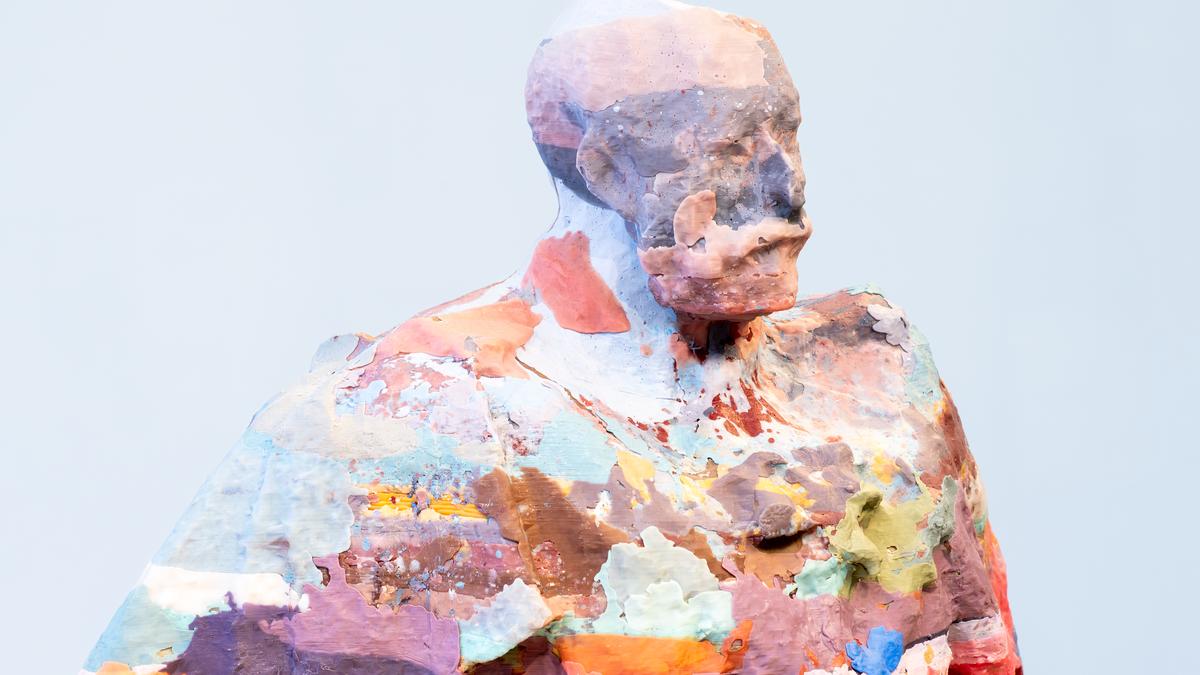
Bengaluru’s King Edward VII statue: A ghost in wax
The Hindu
Australian artist Daniel Press challenges perceptions of colonial monuments through a thought-provoking exhibition featuring the 3D-scanned Bengaluru statue
India grapples with a complex colonial legacy. While it has undoubtedly shed the yoke of British rule, remnants of the colonial past continue to linger. From grand architectural marvels to contested statues, India navigates a path of rejecting and embracing these bygone symbols. This very tension is partly explored in an art exhibition thousands of miles away, on another continent.
In Send-Off, which was on display in July at the La Perouse Museum, Southern Sydney, Australian sculptor and curator Daniel Press explores the complexities of British colonial monuments scattered across the globe through wax sculptures. One, titled ‘Haunted Hobart: Bengaluru, India’, offers a particularly intriguing perspective for Indian audiences. The sculpture is a 3D scan of the controversial King Edward VII statue in Cubbon Park, Bengaluru.
The statue of King Edward VII in Bengaluru has a complicated history with the Karnataka government. The marble figure has been subjected to both neglect and restoration. In the 1960s, city activists called for removing statues symbolising British rule, including this one. The state government even announced its removal in 1977, but the statue surprisingly remained. By the 2010s, neglect took its toll – layers of dust accumulated, and the statue suffered cracks, a broken nose, and a chipped shoe. However, the tide turned in 2017, with restoration efforts finally giving the monument a fresh shine.
But Haunted Hobart is not a mere imitation of King Edward VII in wax; it is more expressionistic. The jagged, multicoloured bust looks more like its title—it is almost as if Daniel sculpted the ghost of King Edward VII.
While visually striking, it delves deeper thematically. The project explores this colonial legacy haunting different locations. Similar to a ghost, the 3D scans themselves act as non-physical representations. They capture the essence of the statues and allow for manipulation and transformation into entirely new sculptural forms.
“”Originally, I was drawn to the idea of body horror as a way to explore these themes,” says Daniel over phone from New South Wales. “Then something interesting happened. The limitations I encountered while acquiring 3D scans, the scans themselves, by the very nature of the process, didn’t perfectly capture the statues. They had these imperfections – missing chunks, crumbling edges – that felt oddly spooky and unsettling. In a way, the scans already possessed these ghostly elements, perfectly aligning with the overall concept. So instead of forcing the horror aspect, I embraced the limitations to further the project’s core message.”
The project started because of a personal connection, says Daniel. “There was this statue I used as a landmark every day, getting around the city. It got me thinking – how many of these wayfinding things are the same worldwide? Is some kind of conversation happening across borders through these shared elements?”













